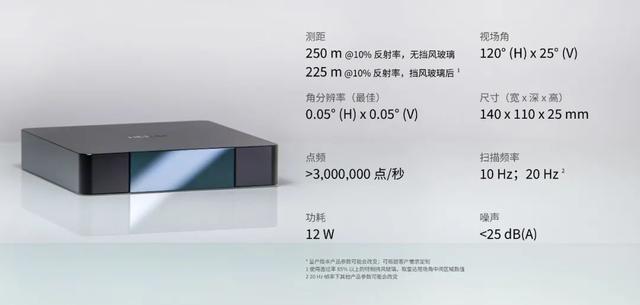On April 14th, Hesai Technology officially released the latest car-grade ultra-thin long-range lidar for the ADAS front-loading production market: ET25. It is a highly-named lidar product with the abbreviation ‘ET’ meaning Extremely Thin, only 25 mm in height.
At the same time, as an in-cabin lidar designed specifically for placement behind the windshield, ET25 provides more possibilities for car manufacturers to install lidars.
Lidars can provide high-precision 3D perception for intelligent vehicles, which can complement and redundantly work with cameras. It is the key sensing hardware for empowering L2+ and L2++ ADAS applications. The installation of ET25 at the side of the windshield makes the overall car body design more streamlined and does not affect the aerodynamic performance of the car.

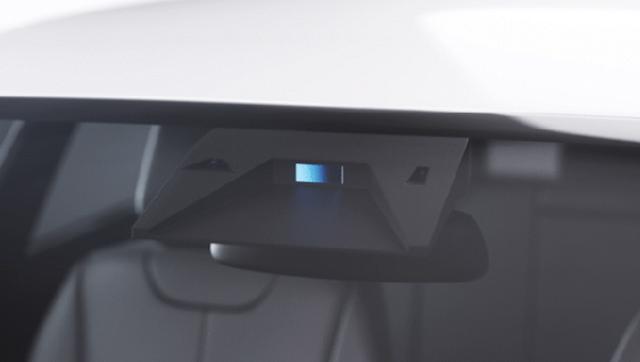
At the same time, the unique in-cabin design of ET25 allows it to be promptly cleaned without additional cleaning plans when encountering dirt, rain, and fog, relying only on the vehicle’s wipers to clear the radar’s field of view.
ET25 has a unique in-cabin integrated design with the following features:
ET25 is only 25 mm thick, nearly half thinner than AT128, but with more powerful performance. The FOV of ET25 is 120° (H) x 25° (V), with a range of up to 250 meters without windshield and 225 meters with windshield, a point frequency of over 3 million per second, and a minimum resolution of only 0.05° x 0.05°. It can provide intelligent vehicles with ultra-high-definition long-range 3D perception.
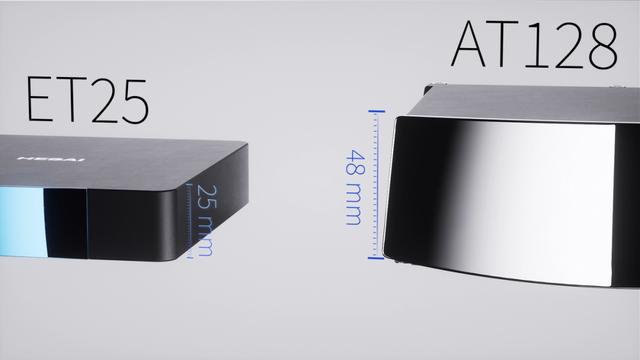
Hesai uses a new generation of self-developed transceiver chips, and more advanced laser transceiver modules make ET25’s receiving chip several times more sensitive. As a result, the 905 nm lidar’s ranging capability for objects with a reflective rate of 10\% is increased to over 250 meters, which helps intelligent vehicles make timely judgments and safer decisions in complex road conditions.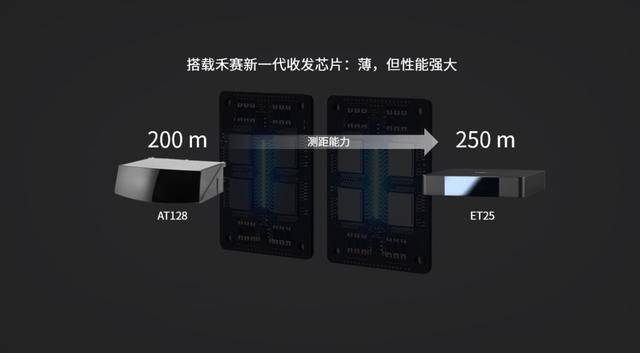
All sensors integrated above the cabin need to have a certain space between them and the windshield, called the Keep Out Zone (KOZ). As the thickness of the sensor increases, so does the size of the KOZ it needs. For example, the ET25 with a thickness of 25 mm has a KOZ that is over 50% smaller than that of other long-distance lidars with a thickness of 45 mm. Because the sensor bracket is located above the driver, a smaller KOZ can take up less cabin space and effectively reduce the impact on the driver’s visibility.
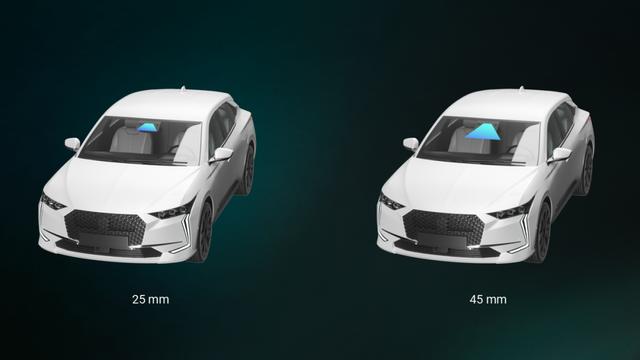
The power of the ET25 is only 12 W, and its heat dissipation performance is excellent, even on hot summer days, it can continue to work for a long time in the cabin. In addition, choosing sensors with lower energy consumption can help intelligent cars save the overall cost and range cost of the battery.
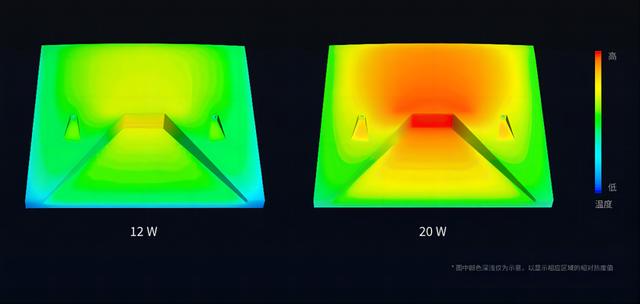
The noise generated when the ET25 is operating in the cabin is less than 25 decibels, which meets the NVH requirements in the cockpit.

On the day of the release of the ET25, Velodyne officially announced a strategic cooperation with Fuyao Group to jointly promote the landing application of the ET25 front-loading mass production plan. The specially-made front windshield glass by Fuyao has optimized the transmission of infrared light in the characteristic band of lidar, solving the industry problem of signal attenuation caused by ordinary glass during the operation of the lidar in the cabin. This kind of specially treated near-infrared enhanced transmission glass is used in the KOZ area of the lidar to meet performance requirements.
In addition, Fuyao also has industry-leading design capabilities for multifunctional front windshield integration assembly and rich experience in design and production supply in the automotive glass industry, which can meet the customized requirements of different car models. It can not only meet the on-board demand of Velodyne’s ET25, but also realize the perfect integration of in-cabin radar and existing ADAS systems.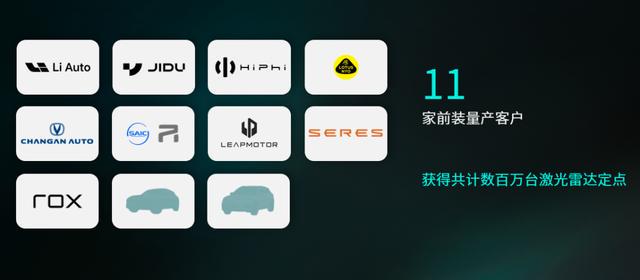
In 2022, Hesai’s annual revenue and delivery volume both exceeded the total of eight laser radar companies listed on US stock markets. Its ADAS laser radar flagship product, AT128, has been mass-produced and deployed for millions of units by 11 top car manufacturers and tech companies, including Li Auto, Jidu Auto, GAC, Lotus, Changan and SAIC. Deliveries began in July of last year and have been installed in multiple models such as Li Auto L9, L8 Max, L7 Max, GAC Hiphi Z, Lotus Eletre, among others.
This article is a translation by ChatGPT of a Chinese report from 42HOW. If you have any questions about it, please email bd@42how.com.
